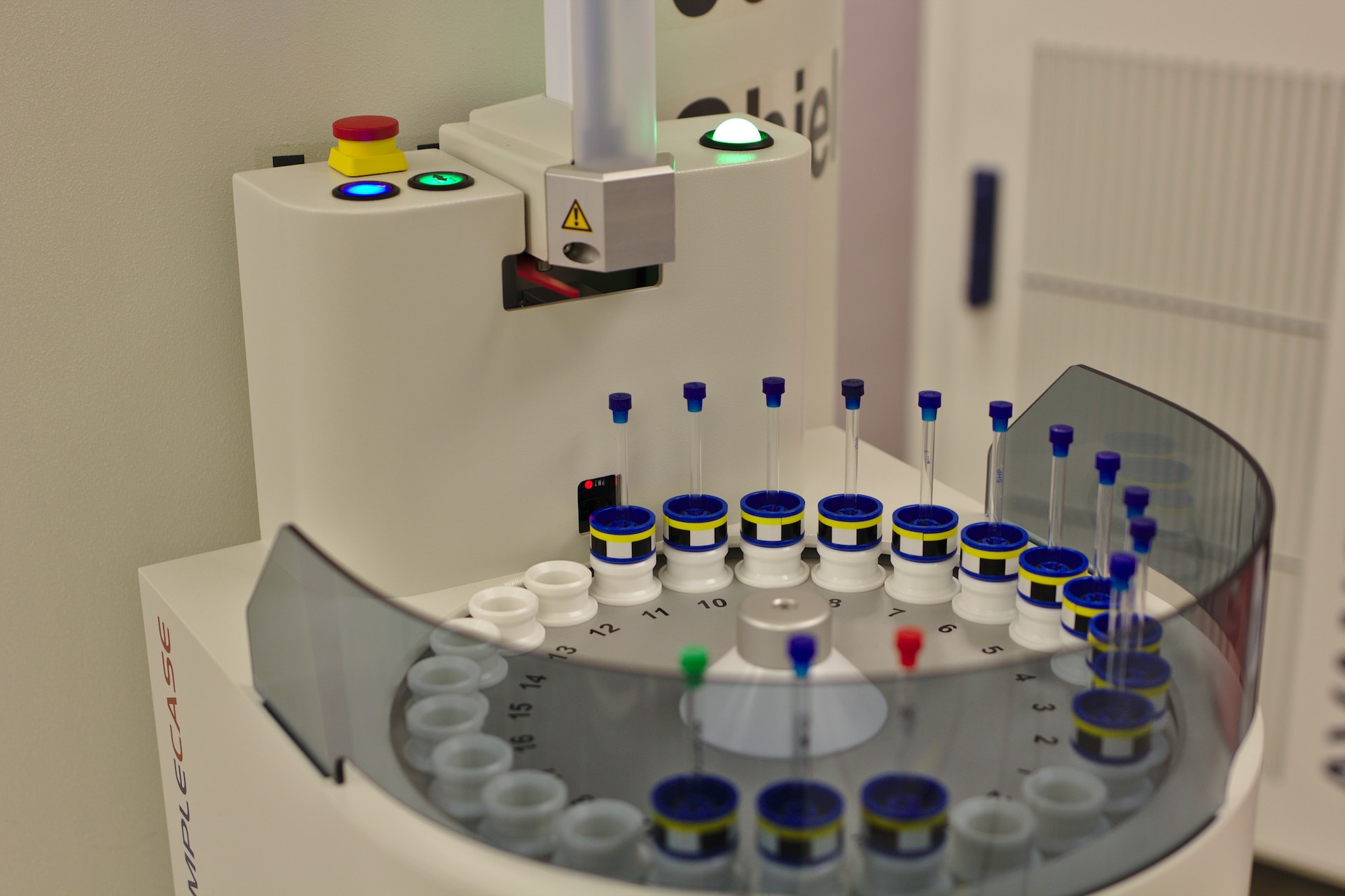Transforming Pharmaceutical Research: Exploring the Fundamental Techniques in Single Cell Metabolomics

Single cell metabolomics is a cutting-edge technique that has revolutionized the field of pharmaceutical research. By analysing the metabolites within individual cells, researchers gain valuable insights into cellular metabolism and the underlying molecular processes. This level of analysis provides a deeper understanding of disease mechanisms, drug responses, and personalized medicine.
What makes Single Cell Metabolomics a Leading-Edge Approach in Pharmaceutical Research?
Traditional metabolomics approaches provide valuable information about the metabolite profiles of biological samples. However, these techniques often involve the analysis of bulk samples, which can mask important cellular heterogeneity. Single cell metabolomics overcomes this limitation by analysing individual cells, enabling the identification of rare cell populations and the elucidation of cell-to-cell variations. This level of resolution is crucial in understanding complex diseases and designing targeted therapies.
Single cell metabolomics also plays a pivotal role in unravelling drug responses at the cellular level. By profiling the metabolites within individual cells, researchers can identify metabolic pathways affected by drugs, assess drug efficacy, and predict potential side effects. This information is invaluable in optimizing drug development processes and improving patient outcomes.
Key Techniques Used in Single Cell Metabolomics
To perform single cell metabolomics, researchers utilize a range of techniques that allow for the precise measurement of metabolites within individual cells. These techniques include sample preparation, analytical techniques, and data analysis.
Sample Preparation for Single Cell Metabolomics
Sample preparation is a critical step in single cell metabolomics, ensuring the accurate measurement of metabolites within individual cells. Various methods can be employed, including microdissection, laser capture microdissection, and fluorescence-activated cell sorting (FACS). These techniques enable the isolation of individual cells while maintaining their metabolic integrity.
Once individual cells are isolated, they undergo cell lysis, metabolite extraction, and derivatization steps to ensure efficient metabolite detection. Researchers must carefully optimize these steps to minimize sample loss and preserve metabolite stability.
Analytical Techniques for Single Cell Metabolomics
Analysing the metabolites within single cells demands the use of advanced analytical techniques characterized by high sensitivity and resolution. Two prominent methods frequently employed in single cell metabolomics are mass spectrometry (MS) and nuclear magnetic resonance (NMR) spectroscopy, each offering unique advantages:
- Mass Spectrometry (MS):
- Identification and Quantification: MS is a cornerstone technique that enables the identification and quantification of metabolites based on their mass-to-charge ratios.
- Diverse Applications: It offers versatility as various types of mass spectrometry, such as liquid chromatography-mass spectrometry (LC-MS) and gas chromatography-mass spectrometry (GC-MS), can be applied based on the chemical properties of the targeted metabolites.
- Targeted and Untargeted Analyses: MS allows for both targeted analysis of specific metabolites and untargeted profiling to uncover a broader spectrum of metabolites within single cells.
- Nuclear Magnetic Resonance Spectroscopy (NMR):
- Structural Insights: NMR spectroscopy provides valuable structural information about metabolites by analyzing their nuclear spin properties.
- Identifying Unknown Metabolites: It excels in identifying previously unknown or uncharacterized metabolites, making it an essential tool in the discovery of novel cellular compounds.
- Studying Metabolic Pathways: NMR spectroscopy plays a vital role in studying metabolic pathways, shedding light on the intricate biochemical processes within single cells.
These advanced analytical techniques, whether it be the mass spectrometry methods with their precision and versatility or NMR spectroscopy with its structural insights, are fundamental in unlocking the mysteries of single cell metabolomics. They empower researchers to delve deep into the complex world of cellular metabolism and extract valuable information crucial for various applications, including drug discovery and disease research.
Data Analysis in Single Cell Metabolomics
The vast amount of data generated in single cell metabolomics requires sophisticated data analysis techniques. Bioinformatics tools and statistical methods are employed to process, analyse, and interpret the metabolomics data.
Data preprocessing involves noise reduction, baseline correction, and peak alignment to ensure accurate quantification of metabolites. Statistical analyses, such as principal component analysis (PCA) and hierarchical clustering, help identify significant differences between cell populations and reveal metabolic pathways associated with specific conditions or treatments.
Machine learning algorithms are also employed to develop predictive models that can classify cell types, predict drug responses, and identify potential biomarkers. These computational methods enhance the efficiency and reliability of single cell metabolomics studies.
Integration of Proteomics and Metabolomics in Pharma Research
The integration of proteomics and metabolomics represents a powerful and comprehensive approach in pharmaceutical research for unravelling the intricacies of cellular processes. Proteomics, a discipline focused on identifying and quantifying proteins within cells, plays a pivotal role in providing insights into gene expression patterns and revealing critical protein-protein interactions. However, to achieve a more holistic understanding of cellular activities, researchers are increasingly combining proteomics with metabolomics, allowing them to explore the intricate connections between protein expression and metabolic pathways.
This integration between proteomics and metabolomics holds immense potential in the pharmaceutical industry. It empowers researchers to discover novel drug targets by uncovering the relationships between proteins and metabolites. Furthermore, it aids in identifying biomarkers that can significantly impact disease diagnosis and prognosis, enabling early intervention and tailored treatment strategies. Ultimately, the data derived from these integrated analyses play a central role in elucidating the mechanisms of drug action, guiding the development of more effective therapies, and fostering the advancement of personalized medicine approaches that promise more precise and targeted treatments for patients.
Applications of Single Cell Metabolomics in Drug Discovery and Development
Single cell metabolomics has demonstrated its significant potential through real-world applications in drug discovery, disease research, and personalized medicine. For instance, in the field of drug development, researchers have used single cell metabolomics to identify unique metabolic signatures associated with various disease states and drug responses. One notable example is the discovery of specific metabolic pathways and metabolite changes in cancer cells in response to targeted therapies. By analysing single cell metabolomics data, scientists have been able to pinpoint metabolic vulnerabilities in cancer cells. This knowledge has paved the way for the development of precision medicines that selectively target and kill cancer cells while sparing healthy ones. This approach is transforming cancer treatment paradigms, improving therapeutic efficacy, and minimizing side effects for patients.
Moreover, single cell metabolomics has played a pivotal role in biomarker discovery. Researchers have successfully identified metabolic biomarkers associated with a range of diseases, from metabolic disorders to cancer. For instance, in cancer research, the analysis of metabolite profiles at the single cell level has led to the identification of specific metabolic alterations that correlate with different cancer types and stages. These metabolic biomarkers have immense diagnostic and prognostic value, enabling early disease detection, precise disease monitoring, and the evaluation of treatment responses. In practical terms, single cell metabolomics is advancing our ability to develop targeted therapies, tailor treatment strategies, and ultimately improve patient outcomes across various disease contexts.
Challenges and Future Prospects of Single Cell Metabolomics
Despite its tremendous potential, single cell metabolomics faces several challenges that must be overcome to unlock its full capabilities. One significant challenge is the sensitivity of current analytical techniques, which often struggle to detect low-abundance metabolites within individual cells. These elusive molecules play critical roles in cellular functions and signalling pathways, making their identification crucial for a comprehensive understanding of cellular metabolism. Additionally, the dynamic nature of cellular metabolism necessitates the development of techniques capable of capturing real-time metabolic changes. Traditional methods often provide static snapshots that may not reflect the rapid fluctuations occurring within a cell.
The future of single cell metabolomics holds great promise, driven by advancements in analytical techniques and interdisciplinary collaborations. Researchers are actively working on enhancing the sensitivity of mass spectrometry methods, enabling the detection of even the scarcest metabolites. Moreover, the integration of single cell metabolomics with other omics technologies, such as genomics and transcriptomics, will pave the way for a more holistic view of cellular processes. By combining these approaches, scientists can gain insights into how genetic information translates into metabolic activity, offering new avenues for drug discovery, disease understanding, and personalized medicine. This interdisciplinary approach will undoubtedly propel single cell metabolomics into a pivotal role in advancing both basic research and pharmaceutical applications.
Conclusion
Single cell metabolomics is a game-changer in the field of pharmaceutical research. By analysing the metabolites within individual cells, researchers gain valuable insights into cellular metabolism, disease mechanisms, and drug responses. The key techniques used in single cell metabolomics, such as sample preparation, analytical techniques, and data analysis, enable the precise measurement and interpretation of metabolite profiles.
The integration of proteomics and metabolomics offers a holistic approach to understanding cellular processes, while the applications of single cell metabolomics in drug discovery and development hold immense potential for personalized medicine and targeted therapies. Despite the challenges, the future of single cell metabolomics looks promising, with advancements in analytical techniques and the integration of multi-omics approaches on the horizon.







